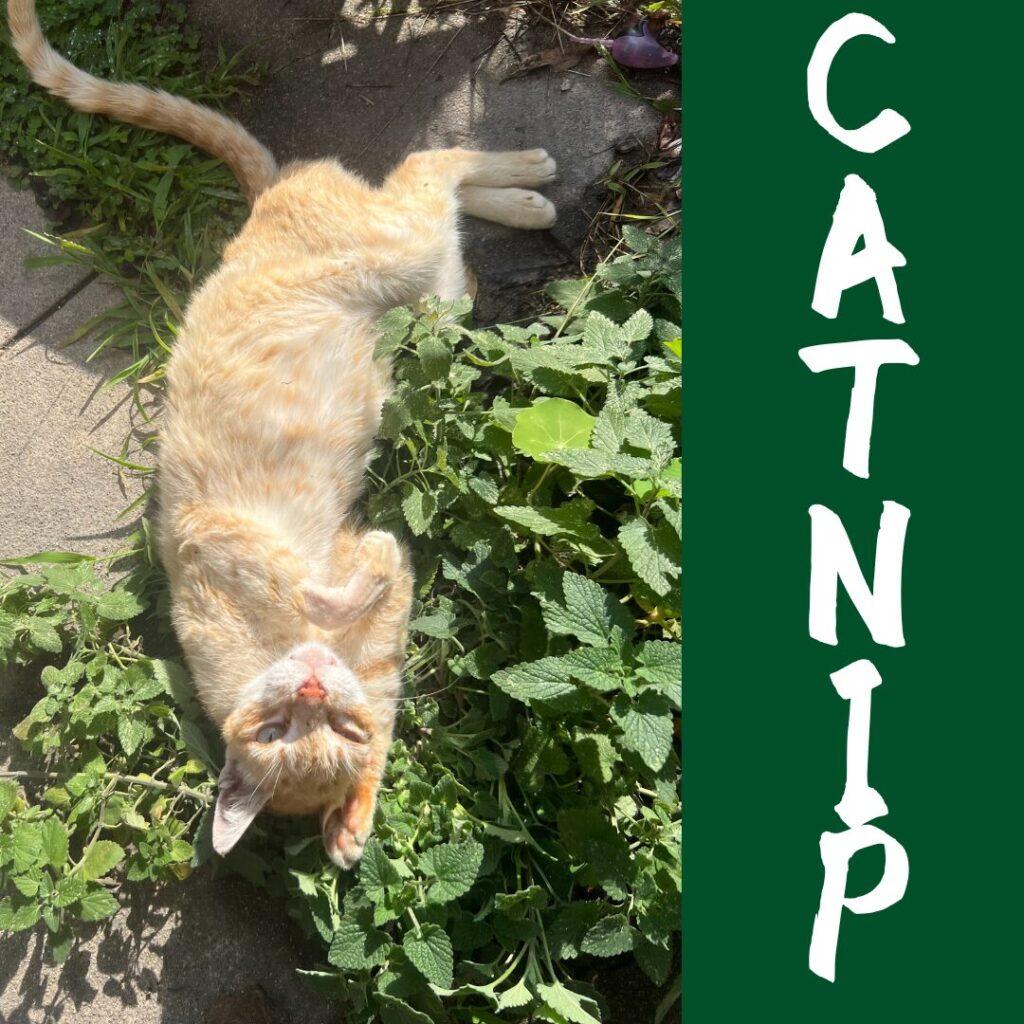Another Blog by April!
What’s the deal with cats and catnip?!?
Not all of my cats enjoy catnip, but the ones who do, REALLY do!!!
I had purchased dried catnip for many years and gave it to my outside guys as well as inside. The seeds from the dried catnip grew from the cracks in the cement and now my outside guys have catnip gardens/beds to enjoy. They really like when I rub the leaves to stimulate the oils, then pet them. It also makes the leaves more fragrant and appealing. I don’t need to purchase the dried catnip anymore as there is an abundance of fresh ‘nip around my property. I always let some go to seed and purposely spread it around each season.
Here is some information from PetMD by Chewy about Catnip
“What Is Catnip?
Catnip, or Nepeta cataria, is a common herb that is a member of the mint family.
It’s a plant that is easy to grow in North America and has feather-like, light-green foliage with lavender flowers.
Catnip leaves have actually been used to make tea, and the flowers are said to relieve coughs. It’s also a main ingredient in some natural bug sprays.
What Does Catnip Do to Cats? How Does Catnip Work?
Cats have an extra scent organ called the vomeronasal gland in the roof of their mouth. This special pathway allows scents that are collected in the nose and mouth to be carried to the brain.
Nepetalactone is the oil that’s found within the catnip plant’s leaves that can cause behavioral changes in cats. For a cat to be exposed to this substance, they have to smell the catnip.
Catnip mimics feline sex hormones, so cats enjoying this substance will often display behaviors similar to a female cat in heat (although both male and female cats can experience the effects).
These behaviors can include overt signs of affection, relaxation, and happiness. Other cats will display active behaviors, such as playfulness or sometimes even aggression.
For cats that have a positive experience with catnip, it can help reduce anxiety and even relieve pain.
Some veterinarians have recommended using catnip to help with separation anxiety if your cat will be home alone for an extended period of time.
Does Catnip Work on All Cats?
Not all cats will respond to the active compound in catnip. Veterinary studies suggest that about 60% of cats will have a behavioral reaction to catnip. If your cat does not react to catnip, you can try silver vine.
There is also evidence that a cat’s response to catnip is a dominant trait that’s based on genetics.
How Long Does Catnip Last?
Catnip effects will vary in length, depending on the cat. Usually, the behaviors associated with smelling catnip will last for around 10 minutes and then wear off gradually.
It could then take 30 minutes without smelling catnip for the cat to become susceptible to the effects again.
Catnip does lose its potency over time, so it is recommended to keep it in an airtight container for maximum freshness.
Can Kittens Have Catnip?
Catnip is not harmful for kittens, but most cats won’t react to catnip until they are 6 months to 1 year of age.
Some cats can be exceptions to this rule, as they will slowly increase their sensitivity over the years.
Can Cats Eat Catnip? Is It Safe?
Cats can ingest catnip, and it may even be helpful for their digestive tract.
The catnip plant has actually been used in people for its antidiarrheal properties. With this said, it is important to prevent your cat from ingesting large amounts of catnip, as this can cause digestive upset.
Can Cats Overdose on Catnip?
Too much catnip can cause health problems in cats, such as vomiting, diarrhea, dizziness, or having trouble walking. Use just a little at a time, and you can always discuss the correct amount for your cat with your veterinarian.
Fresh catnip is more potent than the dried form, so you won’t need to give your cat as much of it. It is also recommended to avoid highly concentrated catnip oils due to their potency.
How to Use Catnip
Catnip is available in many forms:
- Fresh catnip (growing your own catnip plant)
- Dried catnip
- Catnip sprays or bubbles
- Toys stuffed with dried catnip”

